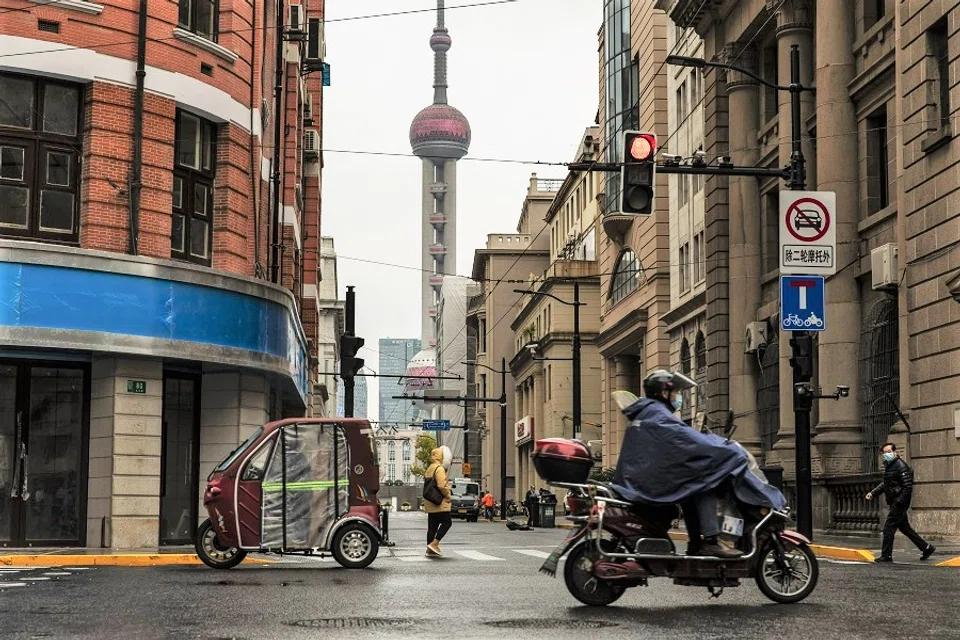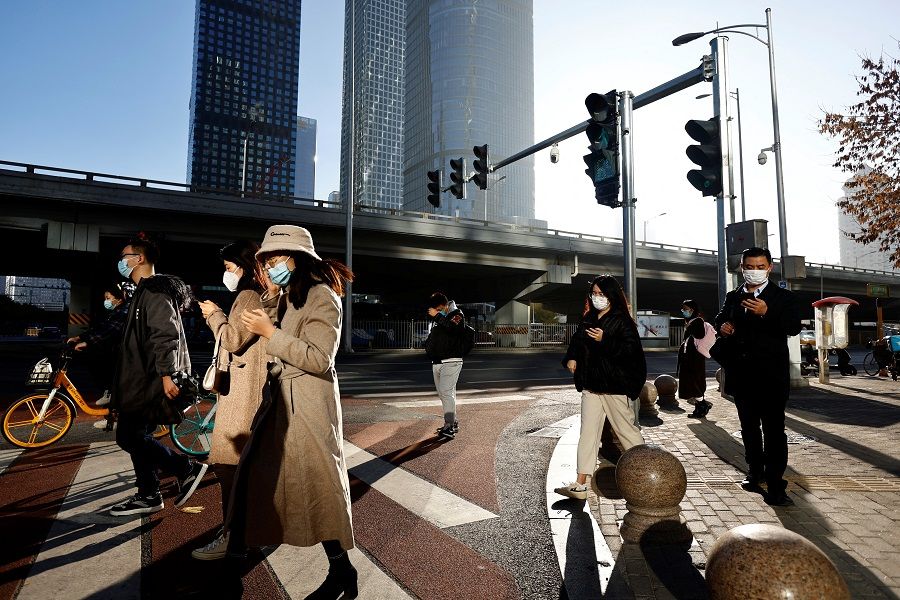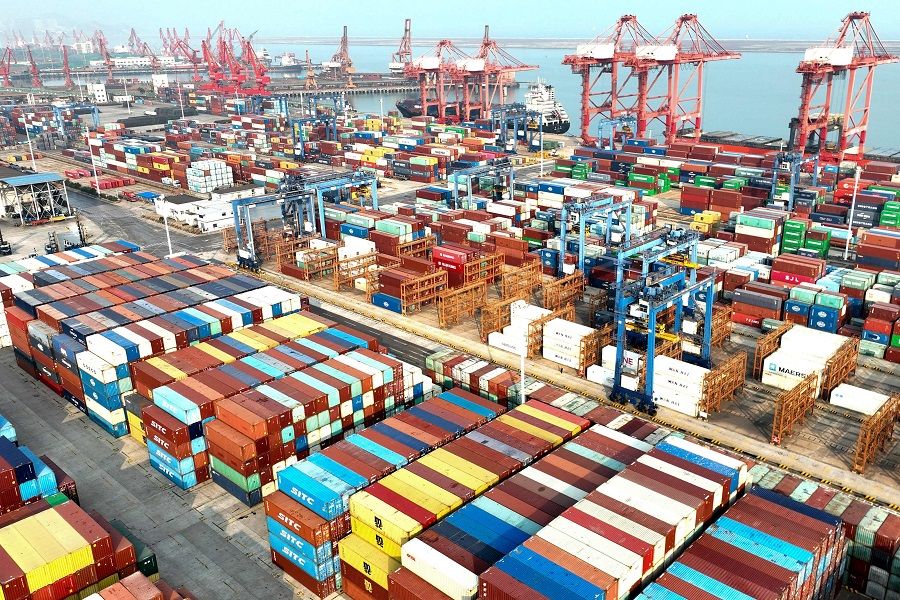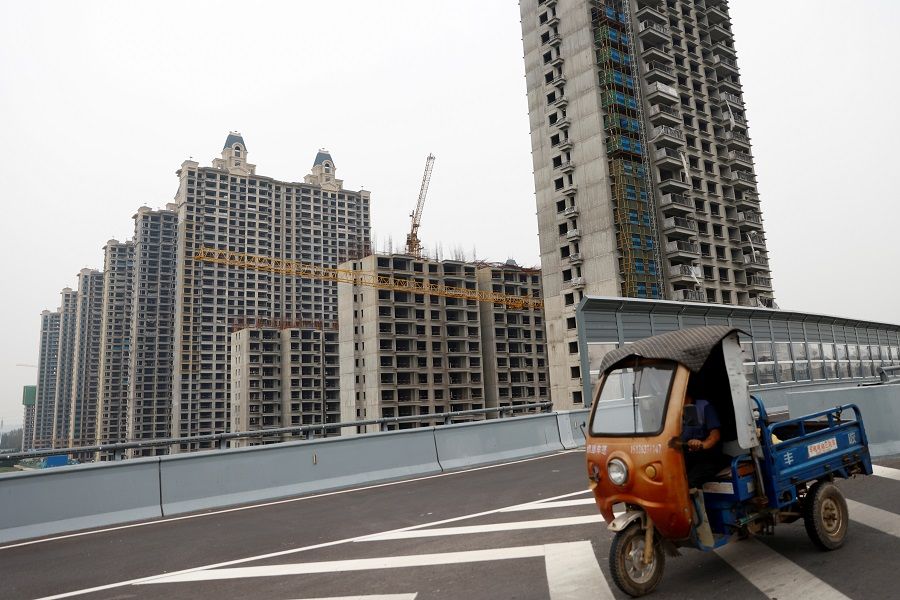Will China get its economy back on track in 2023?

China's economic growth rate was lower than expected for the past three years and its growth target should get back to at least 5% in 2023, said Liu Shijin, a top government adviser and senior economist at the 13th Caixin Summit.
In the beginning of 2022, China set its annual GDP growth target at 5.5%. However, Omicron outbreaks and strict "zero-Covid" restrictions put a spanner in the works. The International Monetary Fund (IMF) marked down China's economic growth predictions for 2022 to 3.2%, the second-lowest level since 1977.
The country's slower growth is challenging its ambitious plan to become a "medium-developed country" by 2035 and double its economy size from 2020's levels. According to Liu, the economy needs to grow at an average 4.7% per year to meet these goals.
Currently, the Chinese government is gradually moving away from its zero-Covid policy. More Chinese cities have announced the easing of lockdowns, testing requirements and quarantine rules. On 7 December, China announced a nationwide loosening of the curbs. Asymptomatic Covid cases and those with mild symptoms can now quarantine at home. We can consider this to be a strong signal that the country is preparing to live with the virus.
Many economists predict that China will reopen faster and rebound quicker than expected in 2023.

Global investors seem to be picking up on the renewed confidence in China's economy. Hong Kong stocks rallied as China announced the relaxation of its pandemic rules. Many economists predict that China will reopen faster and rebound quicker than expected in 2023. Will China get its economy back on track as expected? What challenges will the government face?
One important determinant is whether the whole country can make a smooth transition to coexisting with Covid. The containment measures over the past months have pummelled China's economic performance in 2022. While the easing of curbs is good news, the challenges ahead cannot be ignored.
High youth unemployment rate and weak consumption
China has tried to reinforce its domestic circulation, which means consumption within China should be a bigger engine of growth. However, it is evident that domestic consumption will take time to recover in 2023. China's urban unemployment rate has not changed too much over the past several years, averaging around 5.5%. But the unemployment rate for youth aged 16-24 was nearly 20% in July, according to official data.
... domestic consumption is not likely to be a growth driver for 2023.

Chinese youths contribute to a large proportion of the country's total domestic consumption. The high youth unemployment rate indicates a weakened purchasing power of the group, which negatively affects domestic consumption. As the private sector revs up with the easing of measures, youth unemployment could go down, but not so fast as to return to pre-pandemic levels. Hence, domestic consumption is not likely to be a growth driver for 2023.
PPI and PMI expected to rise
Recent data shows that the Chinese Producer Price Index (PPI), which reflects the prices that factories charge wholesalers for products, fell into deflation for the first time in nearly two years in October, and remained so in November. It once hit 13.5% in October 2021, but has been dropping monthly up until now. In addition, the Caixin China General Manufacturing Purchasing Managers' Index (PMI) has seen four straight months of a fall in factory activity, remaining below 50. A PMI reading below 50 indicates contraction in the manufacturing economy.
Prolonged lockdowns in many cities have disrupted production and operations, making it hard for businesses to deliver new orders. Fortunately, there are signals of less stringent curbs. We can expect fewer disruptions to businesses in the new year, and improved aforementioned economic indicators in the first half of 2023.
Rebuilding confidence in Chinese supply chains
However, global confidence in Chinese industrial supply chains may need a longer time to recover. The profound impact brought by the pandemic restrictions over the past months may last for some time. China has long been dominant in the global supply chain. But the pandemic, geopolitical tensions as well as several recent violent protests have worried many manufacturing firms.
To get its economy back on track, China should streamline its supply chain and rebuild resilient global value chains.

In the short term, these firms are unlikely to break ties with China, but in the long run, global supply chains will become less integrated. Some firms including Apple have accelerated plans to shift some of its production from China. At the current stage, China still holds the manufacturing key. The country is likely to prioritise production and exports, as net export still forms a major driver of the Chinese economy in the near future. To get its economy back on track, China should streamline its supply chain and rebuild resilient global value chains.
'Soft landing' of the Chinese property market
Property used to be a key engine of economic growth for China. Besides, many industries are heavily reliant on the health of the property market, such as construction and financial industries. These industries also provide a huge number of job opportunities.
If the property market cannot provide a "soft landing", China's economic growth won't achieve its goal in 2023.
However, such a growth-driven model collapsed in 2021 when Evergrande, a giant developer, failed to meet interest payments to international investors and fell into a high-profile debt crisis. Although the central bank and regulators have tried to boost the liquidity of property developers, it is not sufficient to restore investor confidence in the property market. The demand for new homes is still very weak. If the property market cannot provide a "soft landing", China's economic growth won't achieve its goal in 2023.

In general, China is expected to have a better economic performance in 2023. But the road of its economic recovery will be bumpy. To boost its economic growth, China will need to issue and deploy stronger economic stimulus packages to support a slowing economy. Besides the traditional fiscal policy of infrastructure investment or tax reliefs, China should implement consistent and predictable pandemic control policies and rebuild the confidence of consumers and investors in the economy.
Related: China is facing a harsh economic winter | China lines up yet more aid for the property sector, but will it be enough? | China's economic outlook is not bleak | Can China save its property market and economy amid fastest-spreading outbreak to date? | China's overreliance on land finance could lead to its downfall | What can we expect now that China's 'zero-Covid' is no more
